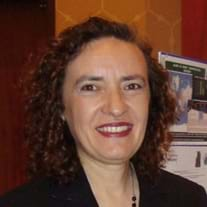Citizen Science in the Digital Age: Eagle Eyes
Science is a tool for combatting disinformation and making informed decisions.
The term “citizen science” first entered the Oxford English Dictionary in 2014, but it describes a long standing tradition of collaboration between professional and amateur scientists. Perhaps no field is as closely associated with citizen science as astronomy, where amateur stargazers continue to sweep the skies for unidentified heavenly bodies. Today, with the advent of smartphone technology, even more fields of scientific inquiry are open to the curious amateur.
Eagle Eyes

One of the oldest continuing citizen science projects is the National Audubon Society’s annual Christmas Bird Count (CBC) founded in 1900 by Frank Chapman, an ornithologist at the American Museum of Natural History. Conceived as an alternative to traditional hunts, the first CBC included 27 participants at 25 count sites across North America, but has grown to 76,987 participants counting 59,242,067 birds at 2,585 sites during the 118th count in the United States, Canada, Latin America, the Caribbean and Pacific Islands.
Documentation and verification of CBC counts has been revolutionized by mobile technologies and digital photography.
“If somebody said they saw a scarlet tanager or an eastern kingbird, which are common in the summer, but which conventional ornithological wisdom says are always in South America during the CBC, those sightings used to be rejected,” explained Geoffrey LeBaron the longtime Audubon Society Christmas Bird Count Director.
“Everything today is 100 percent electronic and no longer published in print. All results are posted online as soon as a compiler checks off that their count is completed, and the data becomes viewable to the public. Once a region is completed, we have a team of expert reviewers that go over every single count. If they feel there’s something that needs documentation, they’ll be in touch with the compiler, who will get in touch with the observer.”
Scientists use the collected CBC data both to observe long-term trends and predict future effects of climate change on species at risk.
“When people are analyzing CBC data, they’re not usually looking at year to year variations, because there is too much variability caused by weather and other factors,” explained Mr. LeBaron. “We looked at the center of abundance of the most common and widespread species and how they varied from the 1960s to the present. We found that a lot of species have moved the center of abundance of their range as much as 200 miles northward and inward away from the coasts.”
Keeping Citizens in Science
Citizen science requires enthusiastic participation of the public, but how can researchers keep the public engaged? This question was recently considered in a paper from Maurizio Porfiri, PhD, Dynamical Systems Laboratory at New York University titled, “Bring them aboard: Rewarding participation in technology-mediated citizen science projects.”
The team hypothesized that monetary rewards and online or social media acknowledgments would increase engagement of participants.
“People contribute to citizen science projects for a variety of different reasons,” said Jeffrey Laut, PhD, a postdoctoral researcher in Dr. Porfiri’s lab. “If you just want to contribute to help out a project, and then you’re suddenly being paid for it, that might undermine the initial motivation.”
“For example, one of the things we point out in the paper is that people donate blood for the sake of helping out another human,” explained Dr. Laut. “Another study found that if you start paying people to donate blood, it might decrease the motivation to donate blood.”
Proper Rewards for Participation
If a citizen science project is suffering from levels of participation, researchers need to carefully choose the level of reward.
“I think with citizen science projects the intrinsic motivation is to contribute to a science project and wanting to further scientific knowledge,” said Dr. Laut. “If you’re designing a citizen science project, it would be helpful to consider incentives to enhance participation and also be careful on the choice of level of reward for participants.”
The technology used and scope of information collected may have changed, but the role remains as important as ever.
“It is important that citizens understand the world in which they live and are capable of making informed decisions,” said Ms. Prieto. “It’s also important that all people understand science, especially to combat disinformation. From this point of view citizen science is vital and a needed contributor to the greater field of science.”
Learn more about citizen science:
Warning: Undefined variable $showit in /var/www/nyas_develop/nyas/public/wp-content/themes/nyas-theme-child/includes/shortcodes.php on line 1802
